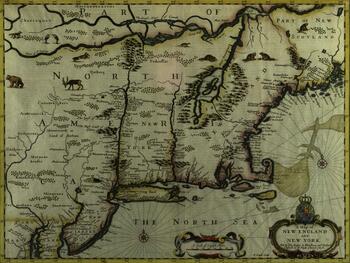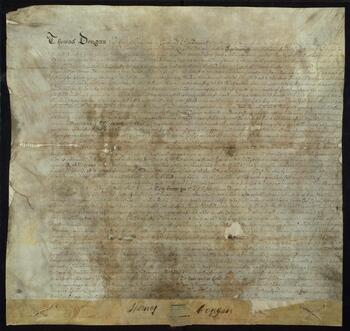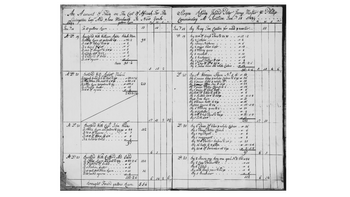The Dutch lost control of their colony when the British seized it in 1665, renaming it New York and instituting new laws. Immigration increased under British control with European settlers encroaching on more and more Native American lands, which worsened relations between the indigenous and immigrant populations. The westward push across New York State by European immigrants and early settlers from the Eastern Seaboard resulted in frequent clashes and conflicts. The indigenous Haudenosaunee (Iroquois) Confederacy occupied much of present-day New York, while the French were attempting to move into New York to gain access to the Ohio Valley.
Under England’s rule, New York continued to attract a diversity of immigrants. John Miller, an English Episcopal Minister sent to serve the British soldiers stationed in the New York colony, wrote of the settlement in 1695, noting the “difference of opinions in religion” as a detriment to the good of the settlement. The English government, as it did in its other colonies, introduced a wide-ranging code of laws known as The Duke’s Laws for the residents of New York, including the Dutch and Native populations.
Like the Dutch before them, there were British immigrants to the colony who saw the advantages of engaging in the increasingly profitable - and controversial - slave trade. By 1703, more than 42% of New York City households held slaves. Neither immigrant nor native, Africans were brought to New York as enslaved labor through 1807 (with the passage of the federal Act Prohibiting the Importation of Slaves), and considered commodities until passage of the Thirteenth Amendment to the U.S. Constitution in January of 1865.
Map of New England & New York, John Speed, London, 1676, courtesy of East Hampton Library.
One of the earliest maps of the Northeast, which fully registers the dramatic shift from Dutch to English dominance in the region in the latter part of the seventeenth century. It is one of the first printed maps to use the term "New York" for both Manhattan (formerly New Amsterdam) and New York State.
Duke's Law p. 03, courtesy of Huntington Town Clerk's Archives.
Laws and codes established in 1665 by the new British government, applying to Manhattan, Staten Island and Long Island.
Dongan Patent, courtesy of East Hampton Library.
Patent granted to the Town of East Hampton by Governor Thomas Dongan of the Province of New York, December 9, 1686. The patent set up town trustees as the governing body with a mission of managing common land for common use. The Dongan Patent is still upheld today.
Trade Book of the Sloop Rhode Island, Dec. 1748-July 1749, courtesy of New-York Historical Society.
An account book for Philip Livingston of New York City and his sloop named Rhode Island, including the purchases of slaves, gold and other goods.



